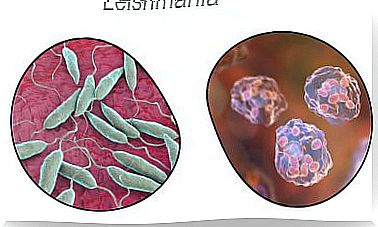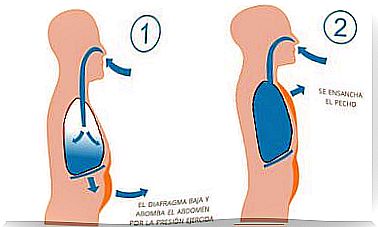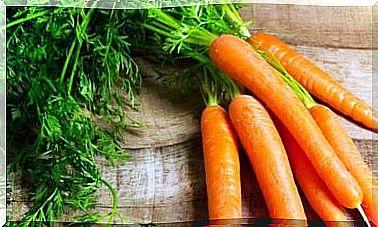How To Make Lentil Hummus?
Hummus in its classic version has a large number of followers. Whether for an aperitif, a toast with vegetables or to accompany a salad, it has become one of the top of healthy eating. Would you like to learn how to make a lentil hummus?
This recipe is one of many versions of this traditional dish. It stands out for its low calorie content, and its significant contribution of protein, vitamins and minerals. Of course, it is complemented with other healthy ingredients that improve both its taste and its properties. Take note!
Lentil hummus
Hummus is a very simple dish, made up of crushed chickpeas with some seasonings such as sesame puree, garlic, and paprika among others. It is a typical food of some countries such as Greece, Turkey, Syria or Lebanon. However, its consumption has spread around the world.
In particular, it is a very nutritious and healthy recipe, ideal to introduce into the usual diet. Its properties come largely from legumes (chickpeas in the classic recipe and lentils or beans in their alternative versions), but also from olive oil and sesame paste.
On this occasion, as we have mentioned, the recipe is based on lentils. A healthy, tasty and inexpensive preparation, just as recommended as the typical version with chickpeas. The best thing is that it is prepared in a few minutes, with just 8 ingredients.
What does it take to make lentil hummus?
With the following quantities, around 12 servings are calculated, but this may vary depending on how the dish is going to be used. In any case, the leftovers hold up well for a few days in the fridge.
- Cooked lentils (400 grams)
- 1 clove garlic.
- 1 tablespoon and a half of tahini or sesame paste (22.5 grams)
- Ground cumin and paprika (sweet or spicy to taste).
- Lemon.
- Olive oil.
- Salt.
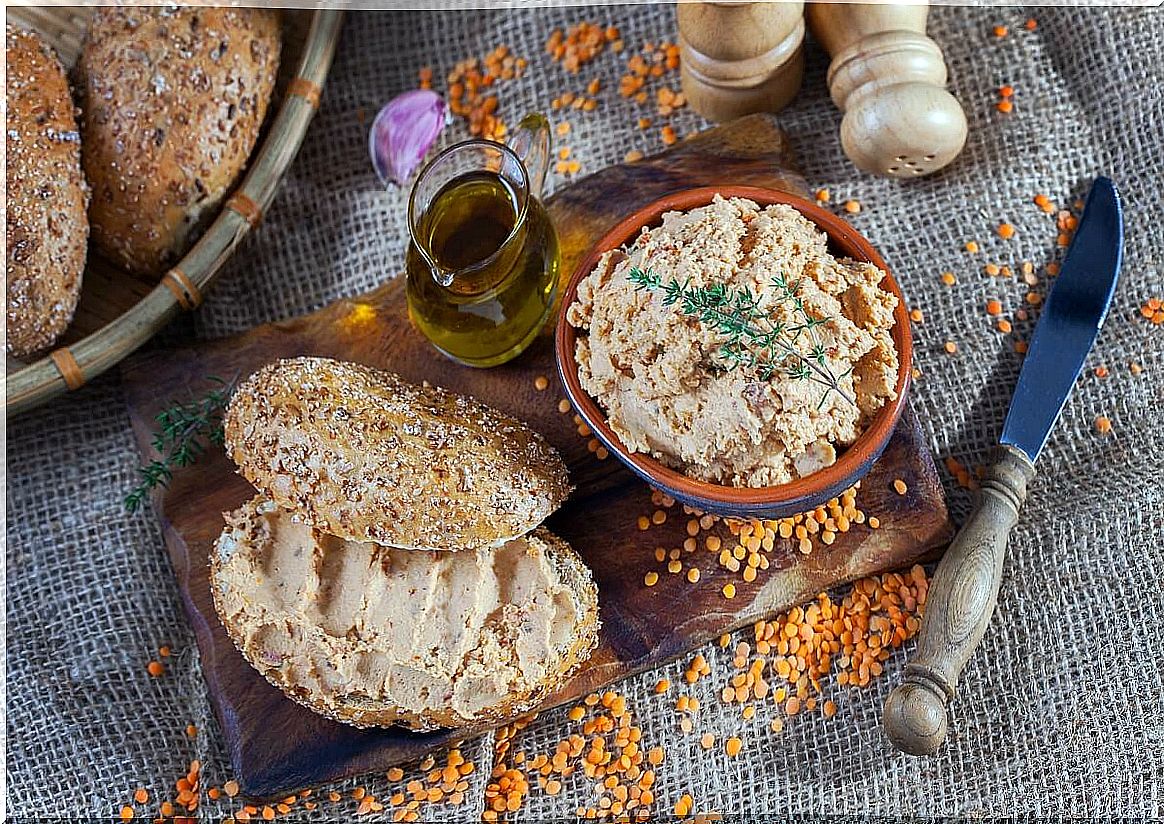
Step by step to prepare homemade lentil hummus
- First, drain the lentils and wash them under running cold water. Remove the excess water again and place in a blender glass.
- Next, add the sesame or tahini paste, garlic, lemon juice, paprika and cumin. Also, add a pinch of salt and grind everything until you get a homogeneous dough.
- Taste and correct the amount of spices and salt to taste. Then add 1-2 tablespoons of extra virgin olive oil and beat again to emulsify.
- Put in an airtight container and keep in the fridge if you do not plan to consume it immediately.
- When serving, do it in a small container and decorate with a little parsley, a pinch of paprika and a drizzle of olive oil.
One of the most common ways to present lentil hummus is as an appetizer or entree, accompanied by toast, breadsticks, or strips of raw vegetables.
- If you prefer to do it with dried legumes, you need 160 grams of lentils.
- It is recommended to soak for a few hours to speed up the cooking a bit.
- Then you cook them until they are tender and drain them.
Benefits of lentils
Lentils are edible seeds that belong to the group of legumes. Its origin is located in the countries of Southwest Asia, and today they are cultivated in many temperate climates. Although there are two main varieties of plants, you can find lentils of many types:
- Green.
- Lentils.
- Red.
- Castellana.
- Du Puy.
- Yellow
Apart from the benefits that are highlighted below, it is interesting to know that lentils are a long-lasting and inexpensive food. They are also ideal to consume at any age, they are versatile and adapt to many forms of preparation.
Food with great contribution of nutrients
The two components that stand out the most are protein and fiber. They also contain carbohydrates and a reduced amount of fat. Of course, they provide very interesting micronutrients such as the following:
- Iron.
- Zinc.
- Potassium.
- Magnesium.
- Selenium.
- Vitamins of group B.
- Phytochemicals.
Source of protein in vegan diets
Like most legumes, lentils have 25% of their weight in the form of protein. Thus, within a varied diet – and together with other sources such as whole grains, seeds and nuts – they become a perfect protein source in vegan diets.
Iron contribution
A standard serving of lentils offers about 5 milligrams of this mineral, which is roughly a third of the daily needs in healthy adults. This is an essential nutrient for the body, and its deficiency can lead to anemia due to lack of iron, with symptoms such as fatigue and weakness.
To obtain an optimal absorption of this nutrient, the ideal is to accompany the lentils with foods that provide vitamin C. This is found in some fruits (oranges, pineapple, mango, kiwi or strawberries) and in vegetables (such as pepper or broccoli) .
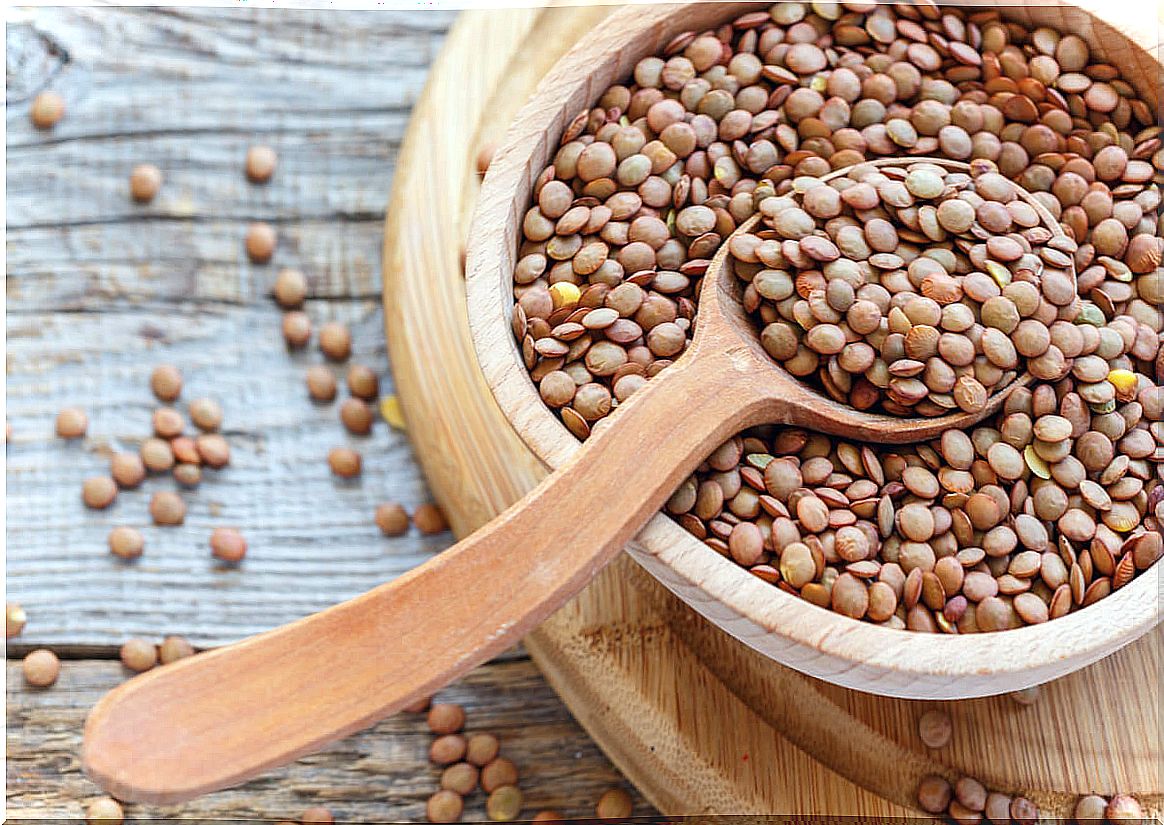
Support for bowel function
Due to its contribution of soluble fiber, it favors intestinal movement and facilitates bowel movements. Also, once in the colon, the undigested fiber becomes food for the intestinal bacteria.
Cardiovascular protector
Lentils help control some of the risk factors for cardiovascular problems, such as hypertension, being overweight, and high cholesterol. Its protective action has been observed to be due to polyphenols and also to other antioxidant compounds.
In a review of studies published in the American Journal of Clinical Nutrition , the intake of 100 grams of legumes, 4 days a week, is related to a 14% reduction in the risk of heart attack or angina pectoris.
Prevention and management of diabetes
During the last decades, scientific evidence has linked eating patterns with a high presence of vegetables with a lower risk of suffering from diabetes. Its main actions are focused on improving insulin sensitivity, lowering blood pressure, body weight and inflammation.
In addition, one of the largest studies on Mediterranean diet and health (PREDIMED) concludes that:
Making lentil hummus: an easy and tasty way to take care of yourself
Lentil hummus is a very healthy dish, as well as quick and easy to prepare at home. In this way, it is possible to control the quality of the ingredients, the quantity of legumes, regulate the final flavor with spices and obtain the desired texture.
It is a very suitable dish to introduce legumes in a more varied way. It also allows it to be presented on a wide variety of occasions, whether with a salad, some toast, a vegetable sandwich or an aperitif.
Thus, it is easy to benefit from the benefits of lentils, and also from other healthy components such as sesame and olive oil fats, fiber, vitamins and minerals.


